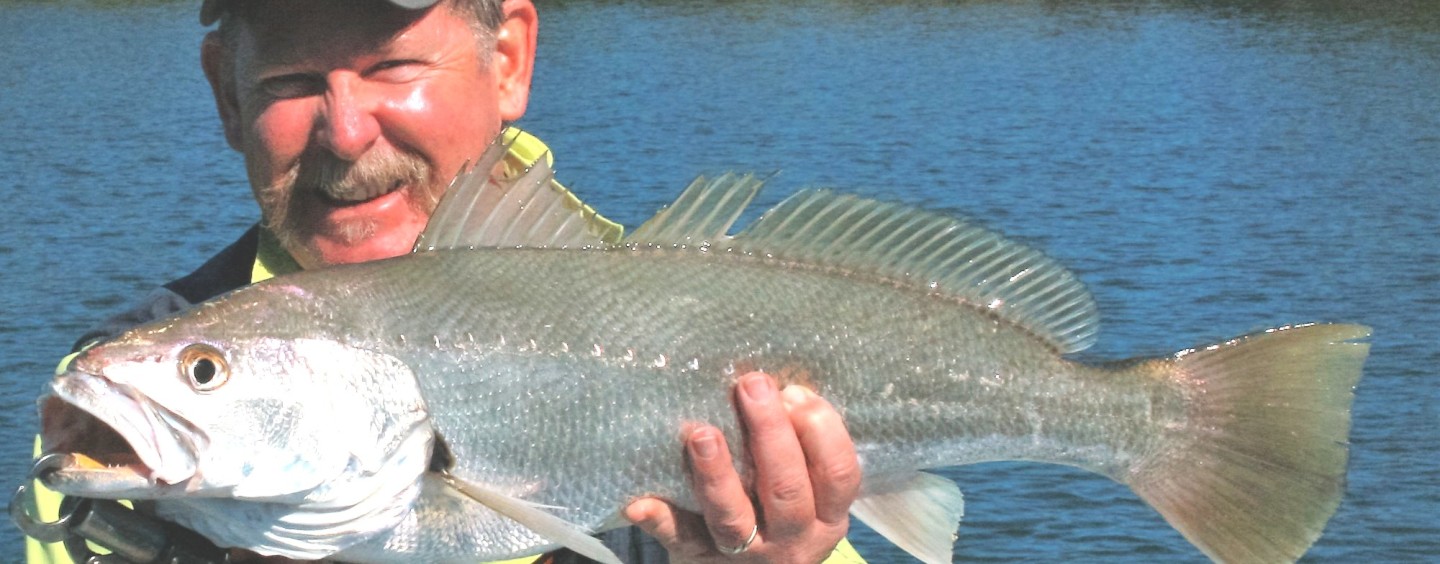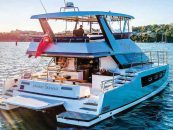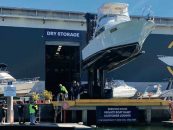Going out fishing is a fantastic way to enjoy quality time and relax with family and friends. The numerous Gold Coast boat ramps provide an easy access to the Broadwater, which is a great boating environment. Access is the key here; you can be fishing within minutes of leaving the boat ramp, or your house if you live on water. On most days, there are enough fish to catch that can feed the whole family, and at times, crabbing can be full on.
GENERAL FISHING KNOWLEDGE
My favourite species are usually calendar-based. I really look forward to the changing seasons to alternate through my favourites, and to keep me sharp. In spring, there are still plenty of mulloway or jewfish (also nicknamed “jewies”) spread throughout the estuary and bluewater reef areas, larger fish being more common offshore especially when livies are used.
Back in the estuary, soft vibes work a treat. They are simple to use, can be trolled, cast, or just tea-bagged along the deeper gutters. Due to their soft composition, fish will repeatedly hit them until a solid hookup is achieved. Jewies just love them. Paddle Tail- and Jerk Shad-style soft plastics are effective and easy to use options.
The most productive areas for this species are generally deeper waters over eight metres to start with. Once found, start looking for variations in current flow in any location where bait fish can school up. This can vary a lot depending on tidal direction, creating nice little back eddies that hold bait. Bottom structure in the form of submerged timber or rock bars tend to consistently support permanent populations of mulloway. By concentrating your fishing efforts an hour either side of a tide change, especially if tides coincide with first or last light, will enhance your chances of success.
When purchasing equipment to catch mulloway, it is important to acknowledge that they are large powerful fish. The legal catch size is 75cm minimum, but the opportunity to catch a mulloway over a metre is quite realistic. Therefore, a medium-sized baitrunner spin or overhead reel with a smooth drag is a critical element in the ability to wear a big one out. Matched to a 10-kilo rod, you should be able to tackle anything that takes the bait.
The best strategy and technique to catch big mulloway is to use live bait. This will produce majority of specimens over 15 kilos in offshore and estuary situations. In Moreton Bay, Brisbane River and the Broadwater, soft plastics account for huge numbers of fish of all sizes. Electronic depth sounders or fish finders will improve your ability to find targets and concentrate efforts in clearly defined locations.
FISHING THIS MONTH
The next four months of fishing (Sep-Dec) in the Broadwater and Moreton Bay are going to be very exciting for mulloway, tailor, flathead, and trevally. You will also find these species in gravel areas off the Gold Coast and Brisbane, and close in reefs off shore.
A variety of different tackle combinations ranging from a light spin outfit suitable for soft plastics and small diving hard body lures are perfect for flathead, tailor, small trevally, and juvenile mulloway. For big mulloway, a heavy spin or overhead outfit capable of using 30-50lb line is perfect for live baiting the deep heavy current driven channels around the Seaway, Jumpinpin Bar, and the Rous Channel.
A high proportion of the really big specimens are caught on large live baits, such as pike and mullet. Legal-sized tailor and mulloway are the main target when using jumbo baits. However, huge dusky flathead, greenback tailor, and even yellowtail kingfish are common bycatch. Baits can be drifted through or can be anchored on the edge of a backwater eddy or drop off; and then you wait.
The most productive time is usually an hour either side of a tide change. Bouncing large soft plastics along the bottom produces larger numbers of flathead, school jew, big eye, and GT trevally, and just about every other species found in our local waters. Trolling 50-60mm hardbodied lures in depths between two and eight feet is another highly successful method of targeting flathead.
A variety of estuary fish including flounder, bream, whiting, and tailor are frequently encountered. This is a great technique for kids, as the constant changing scenery keeps their attention and enthusiasm at a cheerful level.
TACKLE ADVICE
My consistent advice in buying fishing tackle and gear: You need to have an idea about what fish you want to catch and in what area/s you are going to be fishing. Always buy tackle from a specialist tackle shop, preferably from an experienced person who fishes the area, and who can give you expert advice and answer any questions you may have. By doing so, you will at least have the right gear and be a step closer to catching fish. Buying the wrong fishing gear can make the whole fishing experience very frustrating. So avoid department-stores type equipment suppliers, and stay away from online sites as they are relying on you to purchase the tackle that look good or have a cheap price, but are not necessarily effective.
By Kevin Ballantine
Kevin is one of the most well respected anglers on the Gold Coast. He owns Gold Coast Fishing Tackle, and provides expert advice on all types of fishing.
Interview by Andy Kancachian
/Sep-Dec2017






























